Peter Tabuns remembers telling former NDP leader Jack Layton in 2004 that Canada had to diligently implement the Kyoto Protocol.
The longtime environment advocate and Ontario NDP MPP for Toronto-Danforth was then Layton’s special adviser on climate change, at a time when the phenomenon was just starting to be taken seriously by countries across the world.
The Kyoto Protocol committed major industrial economies to reducing their annual CO2 emissions to below 1990 levels by 2012, while providing financial support to developing countries to encourage them to follow suit eventually. Canada signed the accord in 1998 and ratified it in 2002, eventually pulling out of the treaty in 2011.
In February 2007, Layton argued Canada “must honour its obligations under the Kyoto Protocol” as he introduced a climate change accountability act that would impose a full range of greenhouse gas reduction targets at five-year intervals, and give the government authority to ensure compliance through strong regulations.
“Canada has to be involved in international efforts to combat climate change. We must be involved every step of the way, and we should play a leadership role,” Layton said. “It is time to get tough on the polluters.”
Tabuns had Layton’s words top of mind when asked why the Ontario NDP is proposing a Green New Deal.
“Climate change has always been an NDP issue,” he said in an interview.
This past weekend — almost 15 years later — at the NDP’s bi-annual convention in Hamilton, an industrial city an hour west of Toronto, the Ontario arm of the party tabled a resolution to achieve net-zero emissions for the province by 2050, starting with cutting greenhouse gas emissions in half by 2030, compared to 2005 levels.
The NDP has introduced its Green New Democratic Deal. This website gives the links to the document. This is the beginning of a process to actually develop and deliver the program Ontario needs to take on the climate crisis. https://t.co/XDZOGAvTLE
— Peter Tabuns (@Peter_Tabuns) June 16, 2019
Seeking to frame its overarching policy as one that actively protects the environment and the province’s most vulnerable while also revving up a future-proof economy, the province’s Official Opposition has dubbed the resolution the “Green New Democratic Deal," releasing it just over a month after they called on the government to declare a climate emergency and strike an all-party select committee to tackle the climate crisis.
The 27-page document — and the political reaction to it in Canada's most populous province and biggest source of economic activity — will likely guide how aggressively the federal NDP under Jagmeet Singh will seek to push its own climate plan heading into the October vote.
Speaking about the resolution on Saturday, Ontario NDP Leader Andrea Horwath told the convention, “If we do it right, we will create more than a million jobs, and billions of dollars in economic activity.”
Tabuns said the resolution came about organically in the NDP caucus, which is younger and more diverse than even before. Climate change has been top of mind since two United Nations reports in the past year revealed that, first, the world could be as few as 12 years away from reaching an average global heating of 1.5 C — a dangerous tipping point — and, second, that one million species have been put at risk of extinction due to human activity.
'Young people particularly wanted to see New Democrats really start to pay attention to the climate crisis'
Much of the motivation for a Green New Deal came when Ontario’s Progressive Conservative government under Doug Ford, which had just notched its first year in office, began slashing one climate policy after another, starting with the cap and trade program and ending by reducing protections for species at risk and lowering the province's emissions targets.
"Most of us here in Ontario and around the world understand the magnitude of the challenge we’re facing. And that we’ve run out of runway," Horwath, celebrating a decade as leader, said during her keynote speech. "Yet Doug Ford does not. The climate crisis is not his priority, but it's mine. It's yours."

Ontario NDP Leader Andrea Horwath (centre) claps with audience members during the Ontario NDP convention at the Convention Centre in Hamilton, Ont., on June 16, 2019. Photo by Tijana Martin
The NDP’s Green New Deal calls for a radical rethinking of how to approach the intersection of environment and economy, using public-works projects to create economic opportunity that also lessens our collective impact on the planet. For example, it proposes the "world's largest building retrofit program" to be paid for through "new revenue streams, fair carbon pricing, lending and borrowing."
Among other provisions are: a job-training guarantee for those affected by the transition; a community support guarantee promising that no community will be "left behind"; and a promise of unspecified "tailored supports" for each industry affected by a transition to a net-zero emissions economy (but it does not spell out what these supports will be).
Party delegates voted 84 per cent in favour of avoiding a leadership election, meaning Horwath will continue to lead the party for at least the two years until the next scheduled convention and likely into the next provincial election, in 2022, with this climate proposal.
The plan is the NDP’s answer to the U.S. Green New Deal, a sweeping set of policy proposals put forward earlier this year by a group of progressive politicians, including star rookie congresswoman Alexandria Ocasio-Cortez. Both the Ontario and U.S. plans are named after the original New Deal, a program of social-democratic reforms that former U.S. president Franklin D. Roosevelt enacted to fight the Great Depression.
“We really just used it as shorthand for us putting our plan out there because people were engaged with that," Horwath told reporters after her speech on Saturday. "The young people particularly wanted to see New Democrats really start paying attention to the climate crisis.”
Ontario is a major manufacturing province, with factories generating $270 billion in annual sales and employing more than 12 per cent of the total workforce. Some of those jobs (and votes) are in the steel mills around Hamilton, Horwath’s hometown.
The plan, which the convention crowd enthusiastically applauded, provides no costing for the measures it proposes. It does say it will “require a combination of new revenue streams, fair carbon pricing, lending and borrowing.”
Horwath wouldn't say how much the plan would cost, but promised to release a costed plan after consultations and before the 2022 Ontario election.
She said the million new jobs under the plan would come from opportunities related to retrofitting buildings, and from industrial, commercial and government positions.
Ontario Green Party Leader Mike Schreiner said he welcomed the NDP to the "green bandwagon."
'This is a very good start'
At the heart of the idea behind a Green New Deal is to propose a plan that is able to simultaneously address man-made global heating and address economic injustices faced by workers across industries and experiences, said Sonia Theroux, a co-executive director of the grassroots movement Leadnow.ca.
The main concern of a Green New Deal, she explained, is "inequality and the climate crisis."
Theroux says she was "shocked" by how comprehensive the Ontario NDP's Green New Deal was and encouraged that it placed an emphasis on having conversations with stakeholders across industries and sectors.
The document poses pages of discussion questions about reducing emissions in industry and agriculture, strengthening adaptation and assuring the participation of rural, northern and Indigenous communities across the province. These include questions such as "What specific actions should be included in the Green New Democratic Deal?" and "What are the most effective mechanisms to help industries transition to and thrive within a net-zero economy?"
"This is a very good start," Theroux said, indicating that at the very least, it will force politicians across parties to reckon with the idea that the economy and the environment are no longer separate issues.
Niklas Agarwal, a 23-year-old organizer with the Our Time campaign — a non-partisan movement set up by young Canadian voters that urges political parties to adopt Green New Deal platforms — was moved to become a member of the New Democratic Party after they put forward a motion to declare a climate emergency in Ontario. The party's commitment to the issue has impressed him.
You deserve a government with a plan to beat the climate crisis. And so does the next generation. #GreenNewDemocraticDeal #ONDPcon19 #Onpoli pic.twitter.com/Ope5jsgS2W
— Andrea Horwath (@AndreaHorwath) June 15, 2019
"This is the first time I've seen a comprehensive plan of action," Agarwal said enthusiastically in an interview about the proposed Green New Deal. "For me, right now, (the NDP) is our best bet."
Agarwal attended the NDP convention, where Horwath spent half her speech talking about the need to tackle climate change. He said most political climate plans that came before failed to impress him because they did not focus on workers, only on stringent emissions targets. The NDP is seemingly changing that "economy versus environment" conversation, he said.
"The Green New Deal focuses on the fact that, under austerity and capitalism, workers and migrants are being screwed by the powers that be," he said. "The Green New Deal reshapes the economy to put workers at the centre of an industry that promotes and protects the environment."
For Ashley Noble, an NDP youth delegate from Oshawa, the Green New Deal means hope.
“It’s a hard change to make when you are so accustomed to a certain way of living,” she said. “But if we do work together and make these policies together, then everyone has a say in it, and we can climb the ladder together so nobody gets left behind and forgotten.”
She expects the NDP's focus on fighting the climate crisis to resonate with voters across the country come October.
“I think it’s going to benefit us because people have been crying out for help for the environment," she said. "We’ve seen youth across the globe marching out on Fridays to their parliaments because we need action on our climate, and we need it now... We need policy now so that tomorrow is a better day.”
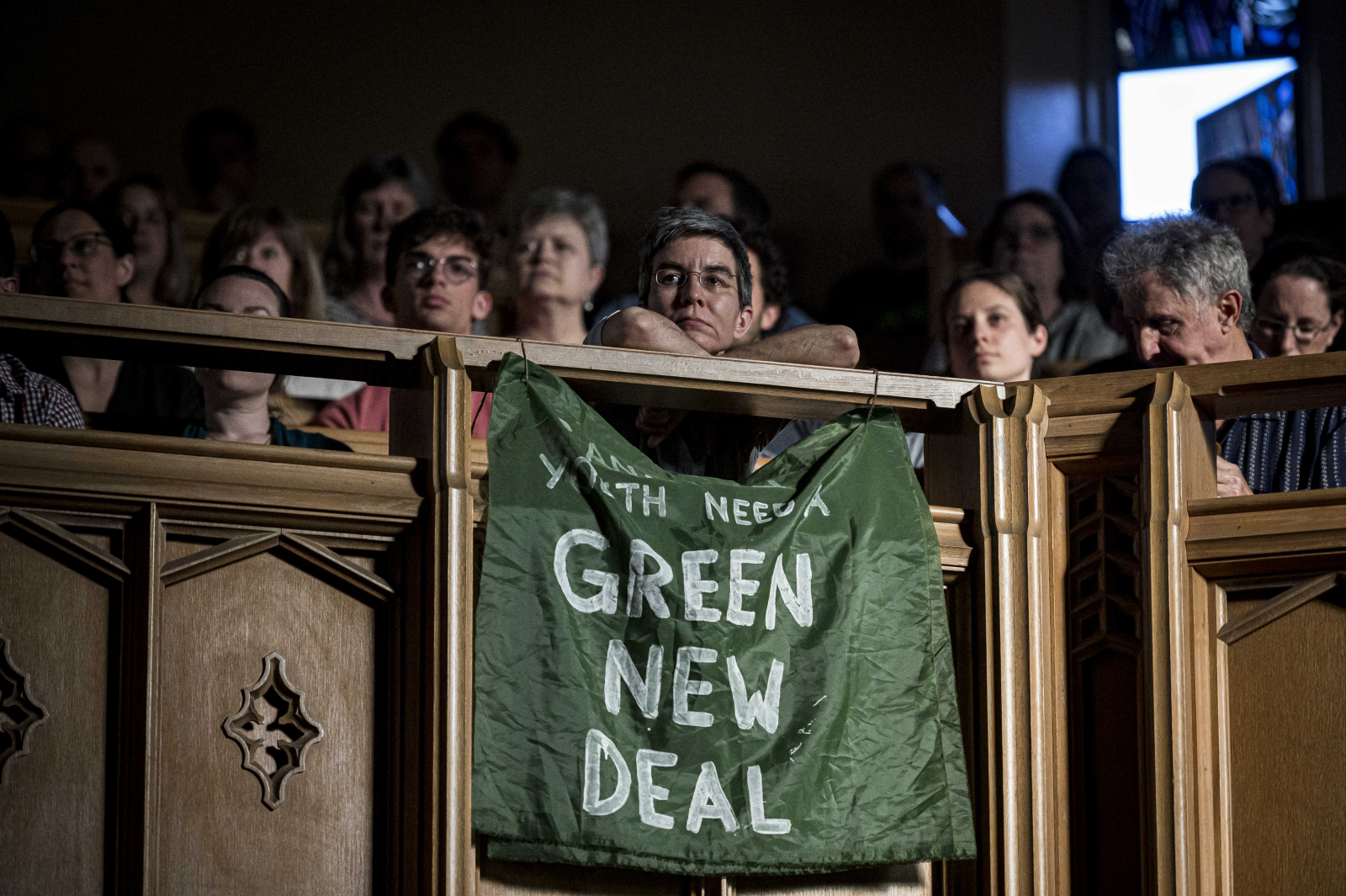
The Toronto stop of the Green New Deal tour happened inside a downtown church on June 11, 2019. Photo by Christopher Katsarov
Those who looked closely at the Ontario NDP's Green New Deal noted that broader reaction to the Ontario party's plan will likely guide how aggressively the federal NDP under Singh pushes his proposed $15-billion-over-four-years climate plan, which aims to create 300,000 new jobs in the transition to a clean economy. At the heart of the federal NDP's plan, which they have dubbed the "Canadian New Deal" climate plan, is free public transit and extensive universal social services to support people as the economy transitions to clean industry.
'This is a living document’
Ontario NDP's Green New Deal proposal comes days after the U.K.’s outgoing Prime Minister Theresa May said her country would meet the ambitious target of net-zero emissions by 2050, following the recommendations of a report commissioned by the government. May's announcement made the U.K. the first G7 country to set the target.
Former environmental commissioner Dianne Saxe, whose job and office were axed by the Ford government, said this was the "first really green platform" she has seen from the NDP, which she said could be a combined result of, on one hand, climate-conscious members pushing the issue and, on the other, "feeling pressure from the Green Party."
"They don't give us any tools on how they think all of this can be achieved," Saxe said. "What they've done is they've set out some very ambitious targets which are justified on the science. And then they've asked a whole bunch of questions: basically, how do you think we should get there?"
Saxe says the questions proposed are all comprehensive and appropriate to achieve "the kind of massive social and economic transformation that we have to make" by increasing broad public support and participation in climate action.

Dianne Saxe, former Environmental Commissioner of Ontario, speaks to National Observer on Dec. 6, 2018. Photo by Cole Burston
But Saxe also worried if it was problematic for the NDP "to co-opt and own the idea of a Green New Deal," questioning if this was being proposed to "survive whatever the next election is" or to meaningfully tackle the climate crisis. There's nothing in the document about land-use and sprawl, she points out, which is Ontario's biggest driver of emissions.
Agrawal, the Our Time organizer, also said he’s concerned that the Ontario NDP's Green New Deal doesn't go far enough. The targets could be a lot stronger, he said, citing studies that note we should be aiming for an 80 per cent reduction in emissions by 2030. Net-zero emissions is a good goal, but he wished the plan was aiming to be "net-negative." And the proposed jobs-training program gives incentives to employers to help workers move to the clean economy, as opposed to doing the same through a big government program that will ensure all employers are forced to move in this direction.
Tabuns said he takes these concerns seriously and hopes the consultations the provincial party has planned in the weeks and months ahead will strengthen the proposed Green New Deal and turn it into an effective climate plan.
"This is a living document," said Tabuns, who is the party's energy and climate change critic. "The point of a Green New Deal is to have a serious conversation that leads to effective climate action. That's what we want to do."
But Saxe remains skeptical.
"They want 50 per cent reductions by 2030. I'm thinking good grief, right? The average life that a car is used is 15 years. 2030 is 11 years from now," Saxe said. "We are talking about replacing an enormous amount of infrastructure in a really unbelievably short period of time. There's a lot to do."
Editor's note: This story was edited on June 18, 2019 at 3:56 p.m. EST to accurately reflect when Niklas Agrawal was moved to join the New Democratic Party.

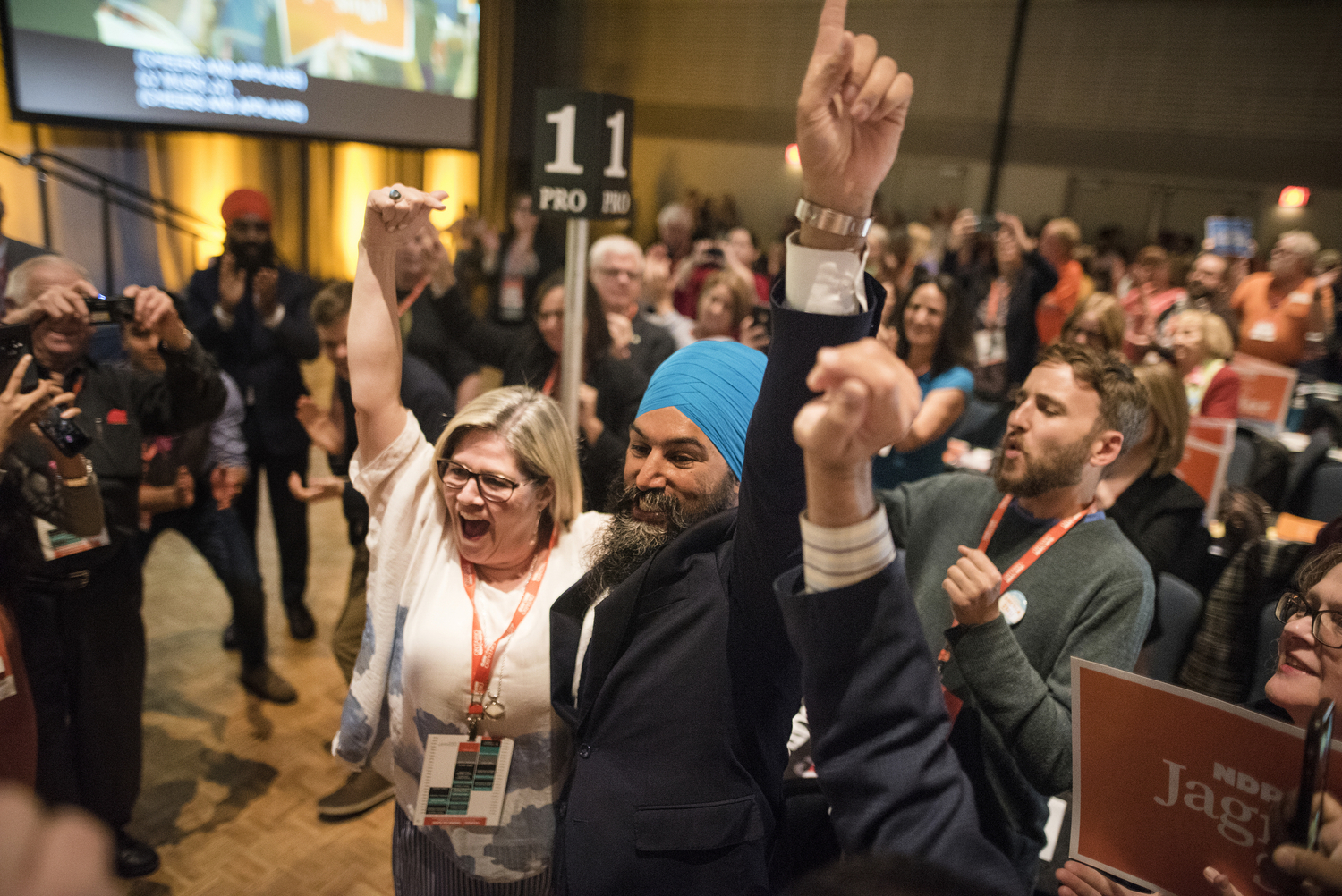


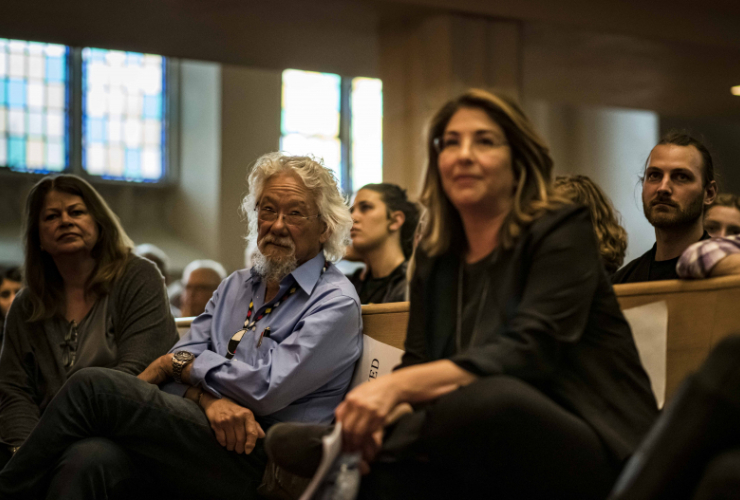

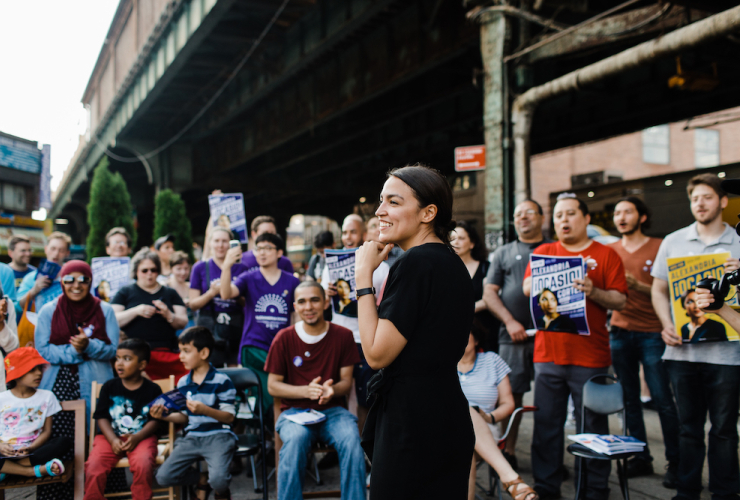
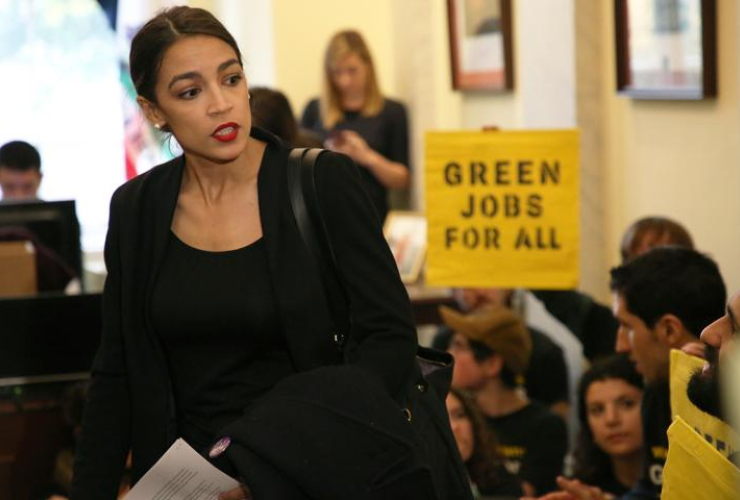
Comments